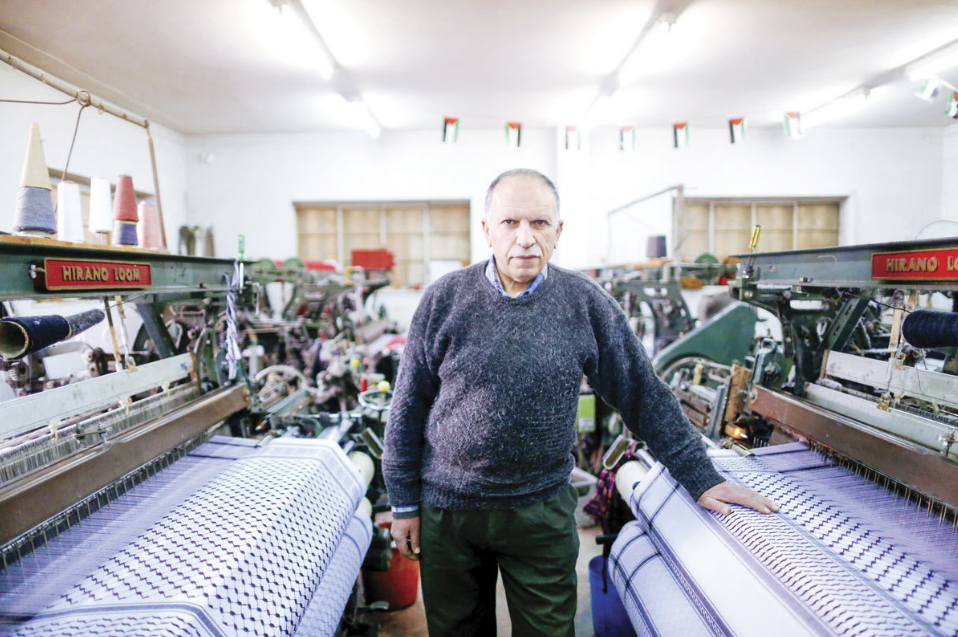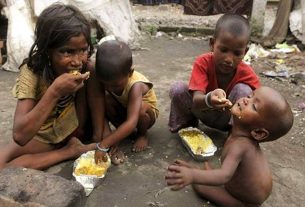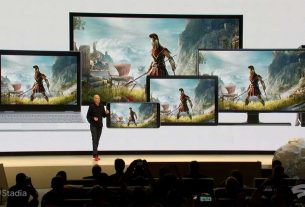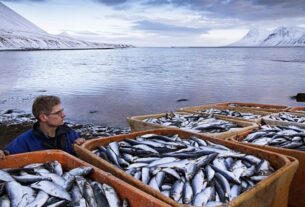In Hebron, one family is keeping Palestine’s keffiyeh production in check.
On a quiet Hebron street, a rhythmic click-clacking of metal on metal gets louder with every step as you descend the staircase into the factory. Once inside, fluorescent lights illuminate the half-concrete, half-tiled basement floor. Mini plastic flags – in red, green, white and black – decorate the ceiling from end to end. On one of the walls is a poster of Yasser Arafat. On his head: his signature keffiyeh.
The click-clacking comes from the 15 burly machines on the workshop floor. Not all of the machines are working, but the ones that are churn out metres and metres of the same pattern worn by Arafat in the poster. This is Hirbawi Textiles, the last and only keffiyeh factory in Palestine.
Yasser Mohammed Joudeh Hirbawi opened the factory over 50 years ago. A merchant by trade, he began importing keffiyyat just as they started gaining mass popularity among Palestinians. Anticipating a new business opportunity, Hirbawi decided to stop importing and started to produce the keffiyat himself. In 1961, he bought his first two state-of-the-art powered looms, the latest models from Japan.
At the peak of the Hirbawi Factory’s business – after the First Intifada in the late 1980s, according to his sons – the looms were operating 24 hours straight and producing upwards of 500 keffiyyat a day, and 150,000 a year. While Palestine was banned from trade with the outside world, the keffiyeh solidified its status as an article of Palestinian nationalism and resistance against occupation. Domestic sales soared.
Today, those numbers are a great deal lower, as the majority of available literature on the factory is eager to point out. After the Oslo Accords, trade opened up, but cheap imports flew in, three times cheaper than the Hirbawis make, and of much lower quality.
But Hirbawi’s looms are still alive, filling the Hirbawi shop shelves – onsite – and churning out keffiyyat in a black and white pattern for Palestine, a red pattern for the Levant and colourful ones ‘for the tourists’, a bespectacled Joudeh Hirbawi says. Like the keffiyeh’s defiant symbolism, the Hirbawimade scarves refuse to be stamped out just yet.



Yasser Arafat elevated the symbolism of the Palestinian struggle in the 1960s.

. Joudeh Hirbawi, in his early 50s and one of the three brothers who own and operate the factory today, can be found winding between the machines on every working day, alongside factory weaver Abdel Aziz El Karki, who has been working at Hirbawi for more than 40 years. They delicately examine each rattling contraption, squinting as they hunch over the cloth, stretched thread and clamouring metal parts.
Japanese-made by manufacturers Hirano Loom Works and Suzuki, the looms are impressive, considering their age. Hirbawi purchased them in pairs in 1961, 1969, 1970 and 1973; the rest he bought in 1990, to make a total of 15. The brochure detailing the textile machineries exhibited in the 1961 International Trade Fair in Tokyo reads that Hirbawi’s first weaver, Hirano Loom Works’ Automatic Loom, wove ‘Gingham Cloth by Tetoron and Cotton-Blended Yarn’ for visitors.


Each 120 centimetre by 120 centimetre allcotton keffiyeh takes 45 minutes to be woven to completion, Abdelazim explains. The pattern is always the same, no matter the scarf’s colour variation; which, like the one worn by Arafat, is in its most Palestinian state with a white background and black design. The middle part, resembling a wired fence, represents the occupation. A border of oblongs – olive leaves – honours the fruits of this land and peace their branches offer.
The meticulous weaving procedure can be broken down into four or five rudimentary steps, Abdelazim explains; though, creating the patterns ‘is a whole other story’. The basic process, however, is the same as any other textile manufacturing: lengthwise threads, called ‘warp’, are prepped, spaced and put through an automatically powered loom, in which they’re interlaced with the weft, which moves back and forth in the shuttle. The finished fabric is wound up, cut and topped off with the keffiyeh’s trademark tassels and trim.


Watchful eyes – Weaver Abdel Aziz El Karki minds a loom by cutting loose threads by hand.

Of course, the way keffiyat are worn has transformed over the decades. They are scarves in the winter, a powerful accessory in other seasons. They’re tied on heads and wrapped as shawls. Or, like Arafat in the poster, they blanket the backs of heads, kept in place with thick headbands, or traditional aqals.
‘The popularity [of the Palestinian keffiyeh] goes as far back as the 1936 revolution against British colonialism,’ Abdelazim says. Before that, the farmers wore thick cotton cloths to protect their heads and necks from the Levant sun while working in the field. Palestinians living in towns and cities began wearing keffiyat as a symbol of solidarity with the actively resisting villagers, peasants and farmers, to make it harder for the revolutionaries to be identified by the British.
As Joudeh and El Karki work, it’s clear that each machine needs constant care and vigilance. The air is a haze of floating cotton fibres, enormous bobbins are piled in cardboard boxes and thousands of threads are stretched from one end of a machine to the other.
In 2008, El Karki was the only employee left out of the 15 members of staff who had worked at the Hirbawi factory since the 1960s. Today, it’s slightly better: around five or six other workers have joined him.
‘We didn’t have room to breathe,’ Joudeh has said of the 1990s, when the factory’s sales were at their lowest, in TV interviews. ‘What we did was change our direction by raising the quality of our keffiyat, giving them a recognisable name and a marketing boost via social media and a website.’ Local Palestinian authorities have since raised the import tax on foreign-made goods, which has helped as well. Business may be better, but it still doesn’t rival the Hirbawi heyday.
‘We now sell in Germany, France, the United States – we get orders from many places,’ Abdelaziz says. Though his voice is tired, he’s quick to be reassuring. ‘The future is good. The future is positive.’ Joudeh agrees. ‘There are enough machines for us to be the main supplier of the world’s keffiyat, if the demand is there,’ he says. ‘We hope that the factory never dies. On the contrary, we’ll pass it on to our children, Inshallah.’

The trim and tassles are the final touches before the keffiyyat are folded and sent to the gift shop.



With more and more keffiyeh production taking place outside of Palestine, the Hirbawi’s switched tactics; they now weave colourful versions to reclaim the Palestinian trademark.
Think your friends would be interested? Share this story!





